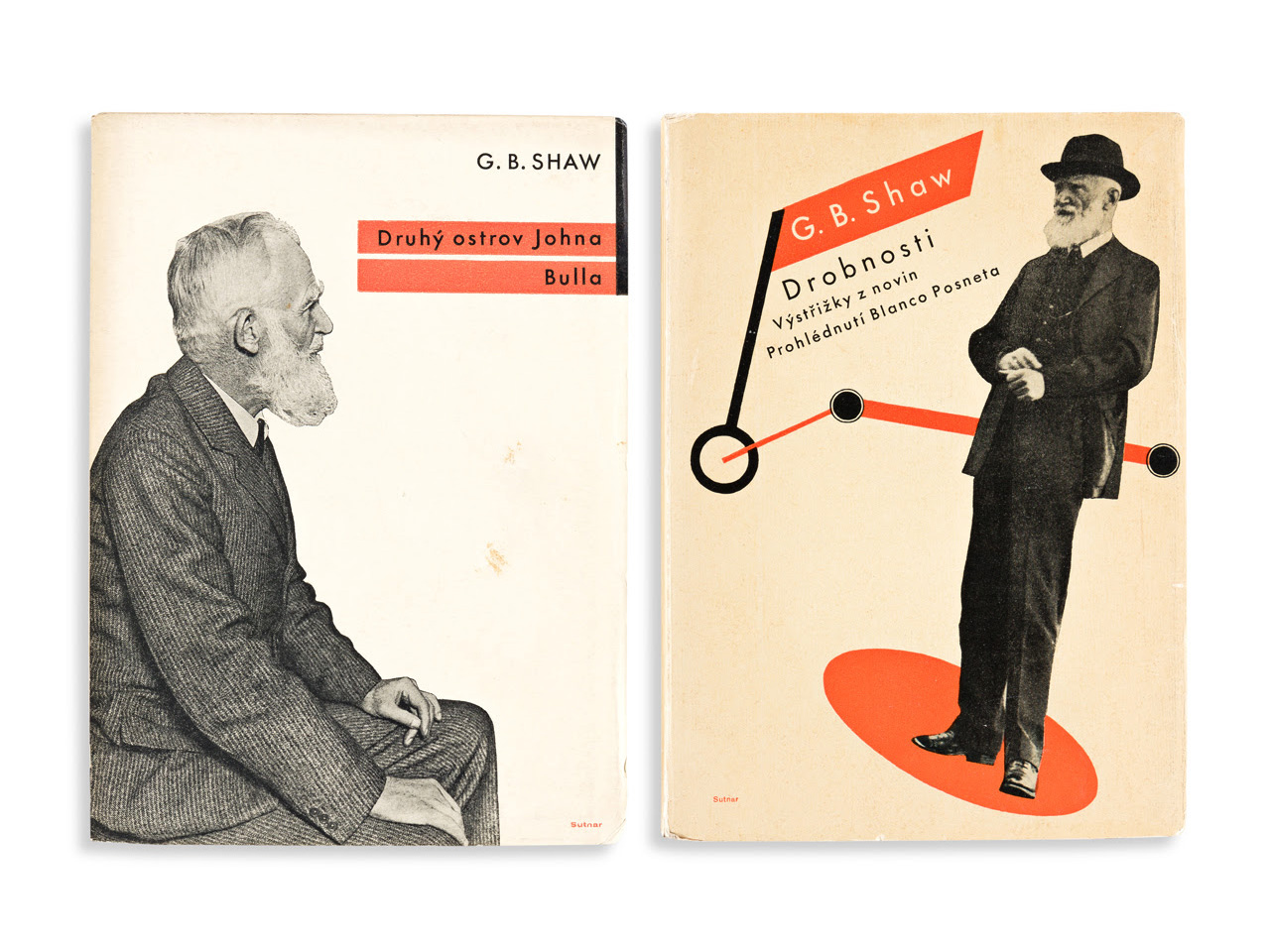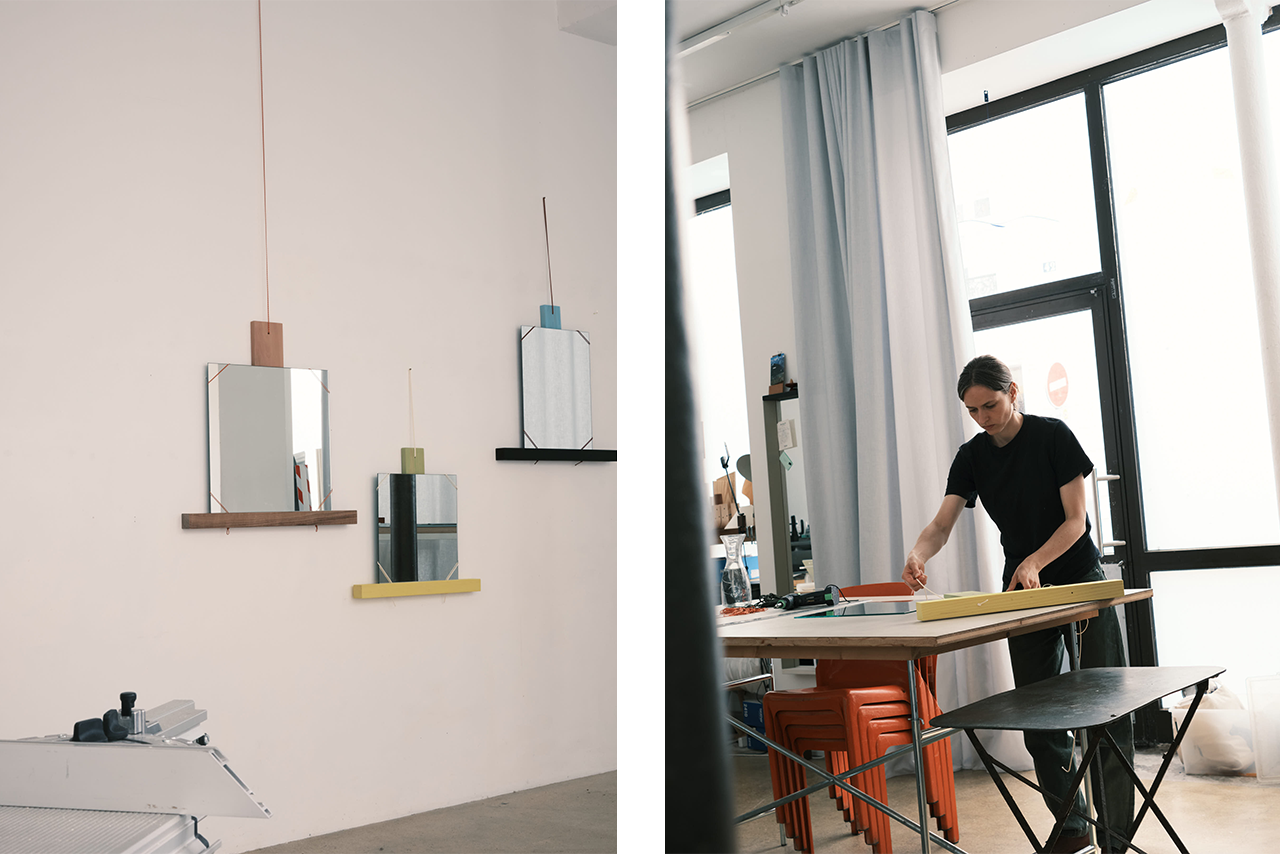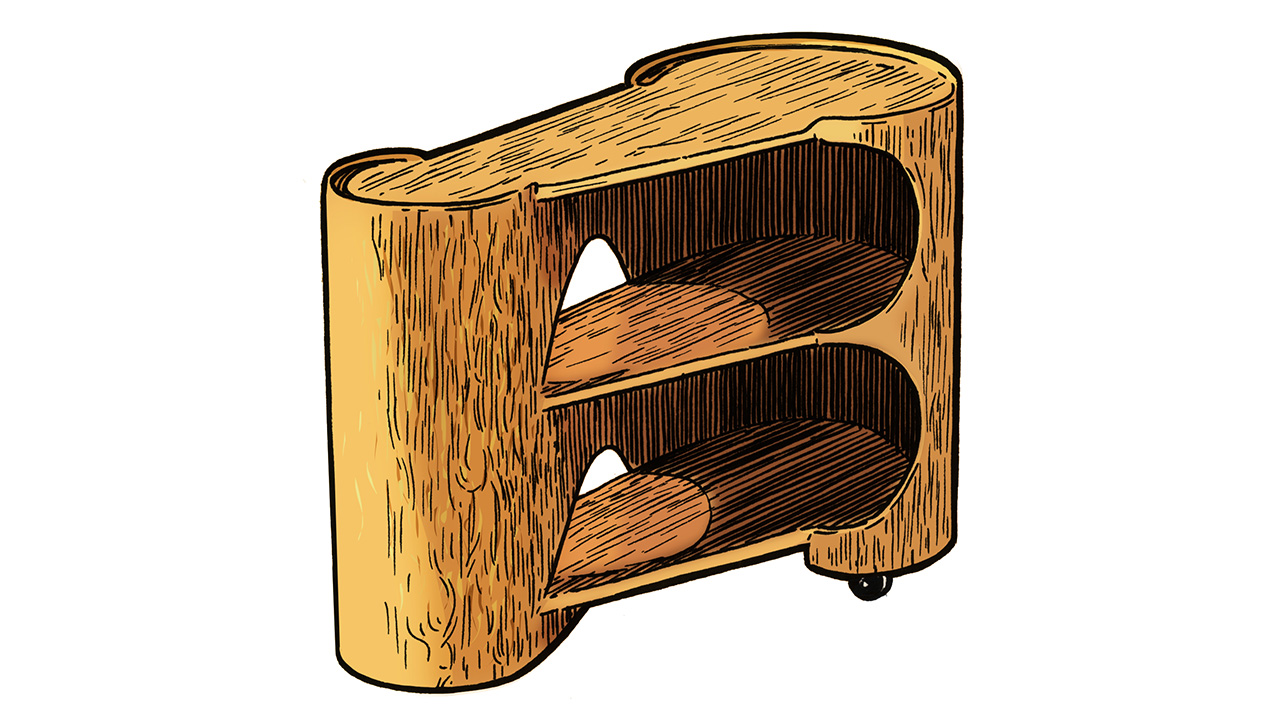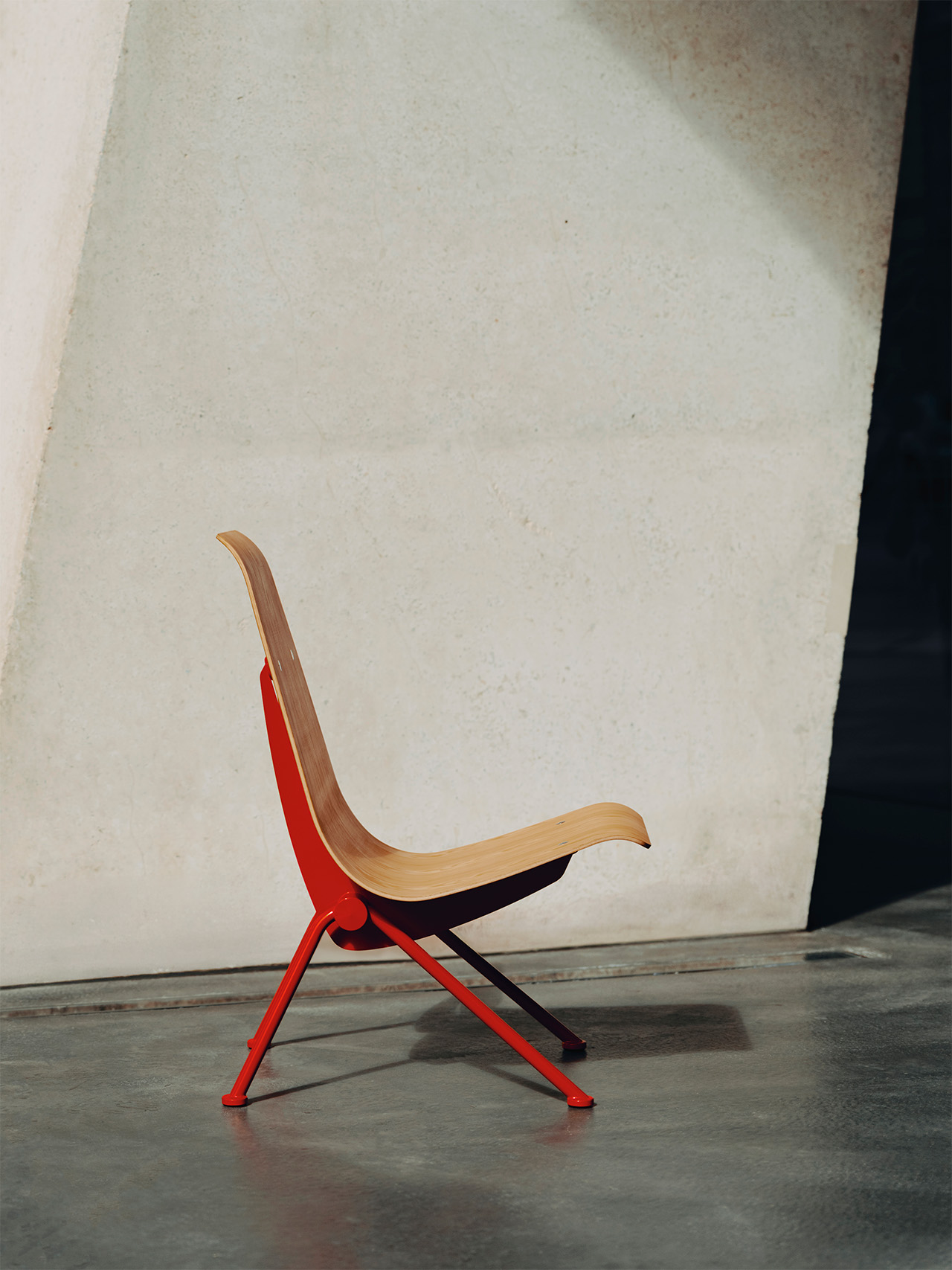The geniusof good graphic design, Portland International Airport, Swiss-French designer Julie Richoz and ready-to-assemble furniture from the 1930s.
|
Wednesday 29/10/25
|

|
|
London
Paris
Zürich
Milan
Bangkok
Tokyo
Toronto
|
|
|
|

under one roof
This week’s dispatch begins under the centrepiece woodenroof of Portland International Airport, proof that combining sustainability and growth is no mere flight of fancy. Then we get up close and personal with Swiss-French designer Julie Richoz, rummage through the archive for ready-to-assemble plywood furniture from the 1930s and take a seat in a Jean Prouvé chair that has always been ahead of the curve. But first, Naomi Xu Elegant reports from the Architecture & Design Film Festival in New York.
|
|
OPINION: Naomi Xu Elegant
Drawing interest
The value of graphic design isn’t always obvious. Done well, it appears natural – a poster can clearly communicate a public health message at a glance, a wayfinding system can intuitively guide passengers through an unfamiliar airport terminal. But, done poorly, it can confuse theviewer and undermine the message that it’s meant to convey.
It’s this value that directors Petr Smělík and Kateřina Mikulcová sought to highlight in their film, Identity: A Czech Graphic Design Love Story, which screened this month at the Architecture & Design Film Festival in New York. The feature covers all sorts of Czech graphic design, from art nouveau pioneers such as Alphonse Mucha to brewery logos and vintage film posters. To convey the magic of these works – unmoving, two-dimensional objects created to adorn walls and surfaces – the duo made the designs dynamic.

“We took all these works of old masters and rather than filming [them as static works], we cut them into layers and, in post-production, brought them to life,” Smělík tells The Monocle Minute on Design. In the film, letters bubble up onscreen before settling onto a page in perfect kerning (the precise spacing between individual letters to ensure readability and visual appeal). Meanwhile, brightly coloured geometric shapes jigsaw together to form buildings. Smělík refers to the film’s use of motion design as “remastering” the antique graphics. “It helps to create rhythm,” he says. “It’s not a static documentary – we wanted to have a playful and fun perspective.”
Seeing the various elements of a single poster assembling one by one on a blank page also sheds light on the process of creating such work, which would have been drawn and painstakingly coloured by hand. The film also benefits from its charismatic narrator, the Czech-American auctioneer Nicholas Lowry – a recognisable figure in three-piece plaid on Antiques Roadshow – who serves as tour guide and whose own fascinating family history is entwined with the film. “Filming it was really one of the best times that I’ve ever had,” he says. Lowry uses an illustrated book by modernist Czech artist Karel Teige as a sort of narrative map, and it’s a pleasure to watch the blocky letters of Teige’s avant garde graphic art dance across the screen.

“Graphic design is everywhere – street signs, billboards, posters, newspapers, books – and by doing this film we wanted to make people aware of this ubiquity and let them notice what’s beautiful and, maybe, what’s not so beautiful,” says Smělík. “Of course, we focus on Czech graphic design but the main message remains universal.” That message being that graphic design can, at its best, elevate our appreciation of a brand, architecture or experience.
Naomi Xu Elegant is a New York-based correspondent for Monocle. Hungry for more? Check out these three impressive branding projects raising the bar for graphic design. For more news and analysis, subscribe to Monocle today.
|
|
DESIGN NEWS: Portland International x Holcim Foundation Awards, USA
Out on a limb
Since 2005, the Holcim Foundation has been making the case for better building through its annual awards programme, which celebrates projects pushing the boundaries of sustainable design and construction. Among this year’s winners is the main terminal at Portland International Airport, updated in 2024 by ZGF Architects. Its sustainable centrepiece is a wooden roof that taps into the spirit of the Pacific Northwest and breaks the design codes of modern airports. “It’s beautiful but it provides many benefits beyond aesthetics,” says Sharron van der Meulen, managing partner at ZGF. “The structure enables long, column-free spans that help to provide clear sightlines for passengers and allow space for future evolutions and expansions without significant construction.” The wood, which is all sourced from within 500 kilometres of the airport, significantly lowers the terminal’s carbon footprint, making it more sustainable than traditional steel construction.


Adding to its award-winning credentials is the fact that ZGF emphasised positive physiological and psychological outcomes for occupants throughout the space. “We put a lot of thought into how we could leverage biophilic design principles to support a positive passenger and employee experience,” says Van der Meulen. “There’s the roof, of course, but also the 5,000 plants placed around the terminal and the 49 skylights that provide 60 per cent of the terminal’s daylight.”ZGF applied a “use what you can” approach to the space, carefully analysing existing structures and systems for potential reuse or upgrades. This strategy allowed it to double the terminal’s passenger capacity while achieving a 50 per cent reduction in energy use – an award-winning ambition, perfectly executed.
Find out more about the Holcim Foundation Awards at holcimfoundation.org. You can also read more about Portland International Airport here, which was identified as a benchmark work of architecture in issue 177 of Monocle.
|
|
WORDS WITH... Julie Richoz, Switzerland & France
Personal touch
Swiss-French designer Julie Richoz creates designs imbued with a sense of poetry, be it the reimagining of a ladder for Paris-based Galerie Kreo ora colourful mirror for Swiss manufacturer Vitra. Though based in Paris, Richoz teaches industrial design at the École cantonale d’art de Lausanne, where she was once a student herself. Here, she tells us about drawing inspiration from sincerity in the design process and why a landscape project would be her dream commission.

Which designer or movement has influenced you the most?
I had the chance to visit the E-1027 house by Eileen Gray, a complete architectural and interior project on the Côte d’Azur. Her approach to furniture and object design fascinates me – it’s full of ingenuity, inventiveness and even humour. There’s so much to learn from the uniqueness of the solutions that she brings to life in her creations.
The sky’s the limit: which piece of furniture would you love to own?
One of those glass lamps designedby Umberto Riva. They’re intriguing objects with a logic that feels very personal to the architect. They express both a constructive, almost technical approach, and yet the result is something poetic and free.
A recurring source of inspiration?
I’m often moved by what could be called ‘folk art’ or, more generally, anything people make themselves. There’s a sincerity in that process. Recently, my boyfriend gave me a book on patchwork made by African-American women in California. They transform old jeans into blankets with a beautiful sense of composition and freedom. I’m drawn to a personal approach – something charged with history yet able to resonate beyond a close circle.

A favourite project that you’ve worked on.
I recently designed the T-Mirror as part of the Future Classics project by WeTransfer and A Vibe Called Tech. The idea was to create an object that anyone could fabricate using a step-by-step guide. I’m drawn to the charm of handmade objects (something that I find hard to match in an industrial context), so I loved the concept, particularly the idea of designing within a protocol rather than a rigid plan. It’s an invitation for people to create their own version: choosing their rope, colours, proportions – their own composition.
A dream commission?
A collaboration on landscape design, working on outdoor environments instead of interiors for a change. I’d love to imagine new ways of experiencing time outside: how to move, how to rest, in dialogue with plants, trees and views. That would be refreshing.
A priority for you and the industry going forward?
Consistency in creating objects that are thoughtfully designed and made well so that they last longer.
Which city has the best design scene? And where should we visit?
Paris. Here are a few addresses that I recommend: Galerie Signé, Les Vins du Matin (my favourite local wine bar) and Parc des Buttes-Chaumont.
Fancy a few more tips and addresses for your next trip to Paris? Look no further than Monocle’s trusty City Guide.
|
|
from the archive: Simple Furniture Trolley, UK
Plying a trade
A turning point in modern British design took place in a basement in Fitzrovia in the 1930s, where Gerald Summers and Marjorie Butchers ran a shop called Makers of Simple Furniture. The couple were determined to sell functional furnishings but as they also lived in the showroom, they had no space to paint or construct complicated joints for their pieces. Summers started experimenting with thin plywood originally designed for aeroplanes and developed a groundbreaking line of bent-plywood furniture, including this S-shaped trolley.

Made in 1934, this cart was commissioned by one of Britain’s only other proponents of plywood at the time: Jack Pritchard, co-founder of modernist development and furniture firm Isokon. While Pritchard’s work for Isokon has been canonised (thanks, largely, to the eponymous apartment building in Hampstead), Makers of Simple Furniture shut up shop due to the Second World War and fell into obscurity. The firm’s fascinating history and full catalogue have finally been documented by Martha Deese in Gerald Summers & Marjorie Butcher: Makers of Simple Furniture, 1931-1940. The book is filled with smart designs that readers, in theory, might be able to make at home.
|
|
around the house: Antony chair, Switzerland
Ahead of the curve
Celebrated French designer Jean Prouvé first made this chair in 1954 for the Cité Universitaire in Antony, a commune in the southern suburbs of Paris where the largest student residence in Europe was once located. In more recent decades, the chair has been produced by Swiss manufacturerVitra and found its way into homes and offices around the world.

The combination of a gently curved seat made from European pine and a bright-red metal spine gives this piece quite the backbone. This particular limited-edition version comes in an original Prouvé hue – Rouge Corsaire – and is available to purchase until the end of the year. We picked ours up at pre-eminent design retailer Aram in London’s Covent Garden.
vitra.com; aram.co.uk
To see more of our favourite pieces in one of London’s architectural icons, Space House, pick up a copy of the Monocle Design Directory or click here.
|
|
MONOCLE RADIO: Monocle on design
New episode: Frieze Connect’s Charlene Prempeh on the unexpected effects of good art and design
Nic Monisse discusses the social benefits of good art and design with Frieze Connect’s Charlene Prempeh. Then: New Delhi-based craft entrepreneur Vikram Goyal tells us about the search for a “modern Indian design language”.

|
|
Image credits:
Kyle Johnson, Ladislav Sutnar, Conor Cinch, Karel Teige, Edvinas Bruzas, Stephane Abouradam, Illustration: Anje Jager
This email is from Monocle whose
registered office is at Midori
House, 1 Dorset Street, London,
W1U 4EG.You have received this
email because you have previously
provided us with your email
address and subscribed to Monocle
bulletins.
© 2025 Monocle
|
|
|